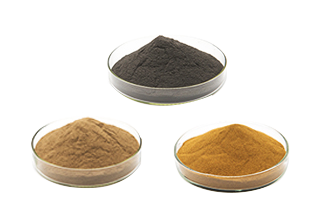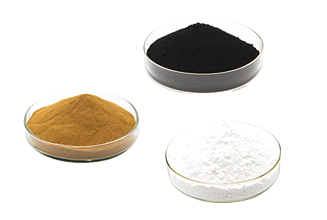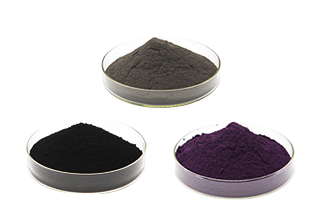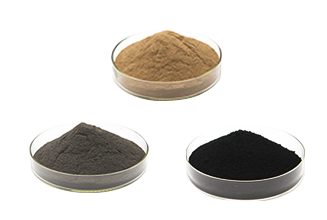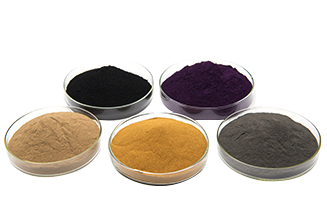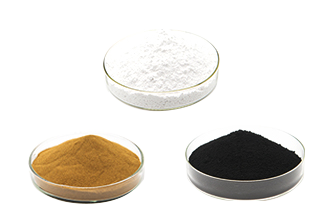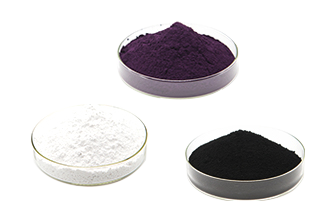Effect of Mo–Si–B on Sintering Process and Properties of ZrB2 Ultra-high-Temperature Ceramics
Ultra-high temperature ceramics (UHTCs) refer to ceramic materials whose service temperature is above 2 000 ℃, mainly including some borides, carbides and their composite materials . Among them, zirconium diboride (ZrB2) has attracted wide attention from scholars due to its high melting point, relatively low density, high thermal conductivity, high hardness, low thermal diffusion coefficient, corrosion resistance, etc., and it is the most popular among ultra-high temperature ceramics. One of the promising materials. However, the disadvantages of ZrB2, such as poor toughness, poor oxidation resistance, and difficulty in sintering, limit its application and development in extreme environments such as high temperature and large temperature gradients such as spacecraft reentry into the atmosphere and rocket propulsion systems.
In recent years, scholars at home and abroad have used dispersed ceramic particle toughening, ductile metal phase toughening, whisker chip or short fiber toughening, phase change toughening, fiber toughening and other methods to improve the toughness of ZrB2 ceramics to a certain extent. . In addition, in view of the shortcomings of ZrB2 difficult to sinter, the commonly used solution is external field assisted sintering, such as SPS sintering, hot pressing sintering, vibration hot pressing sintering and microwave sintering. The above sintering processes can reduce the sintering of ZrB2 ceramics to a certain extent. Difficult to prepare dense ZrB2 and its composite materials. Adding some silicon-containing compounds such as SiC, MoSi2, TaSi2 to ZrB2 will form a glass phase layer such as SiO2 and ZrO2 on the surface of the material during high-temperature oxidation to prevent the entry of oxygen, thereby improving the oxidation resistance of ZrB2.
The high temperature metal Mo has a high melting point (2 620 ℃), a low coefficient of thermal expansion and excellent thermal shock resistance. These performance parameters are similar to ZrB2. If an appropriate amount of Si and B are added to Mo metal to form a Mo5SiB2 alloy phase, it can improve its low-temperature brittleness, and at the same time increase its toughness and ductility. The thermal expansion coefficients of a and c axes of Mo5SiB2 are very close and almost isotropic. Its melting point is 2 200 ℃, density is 8.864 g/cm3, and Vickers hardness at room temperature is about 18 GPa, with good oxidation resistance, mainly used in high-temperature structural materials, heat exchangers, aircraft engines, gas turbine engines, unloaded bearing components, high-temperature device coatings, etc.
Selecting Mo-Si-B as the second phase additive, on the one hand, is based on its good high-temperature performance and does not reduce the high-temperature performance of ZrB2; on the other hand, Mo-Si-B will produce a borosilicate glass phase at high temperatures, which can Improve the oxidation resistance of ZrB2 ceramics; moreover, as an alloy, Mo-Si-B is a ductile phase, which can also improve the toughness of ZrB2 ceramics. Mo powder, Si powder and B powder are selected as raw materials, with the aid of their in-situ reaction and ZrB2 for compounding, to study the influence of raw material formula on the phase composition, microstructure, mechanical properties and oxidation resistance of sintered composite samples.
Conclusion
1 With Mo powder, Si powder and B powder as the second phase additives, a dense ZrB2 ceramic composite material is prepared by hot pressing and sintering under the conditions of 1 900℃, 20 MPa, and Ar protection, and Mo5SiB2 is formed by in-situ reaction. Such ternary and binary compounds are compounded with ZrB2 to improve its fracture toughness and oxidation resistance.
2 The flexural strength and fracture toughness of the sintered sample show a trend of first increasing, then decreasing and increasing with the increase of the Mo-Si-B content. When the Mo-Si-B content is 20%, the fracture toughness of the obtained sample is the largest. Its value is (5.55±0.11) MPa·m1/2. When the Mo-Si-B content is 30%, the flexural strength of the obtained sample is the largest, and its value is (500±40) MPa.
3 Mo-Si-B can effectively improve the oxidation resistance of ZrB2 ceramics. After being oxidized at 1 300 ℃, a dense oxide film is formed on the surface of the material to isolate oxygen corrosion. Its thickness is about 20 μm. The area oxidation mass increase is only 4.13 mg/cm2 at the lowest.
In recent years, scholars at home and abroad have used dispersed ceramic particle toughening, ductile metal phase toughening, whisker chip or short fiber toughening, phase change toughening, fiber toughening and other methods to improve the toughness of ZrB2 ceramics to a certain extent. . In addition, in view of the shortcomings of ZrB2 difficult to sinter, the commonly used solution is external field assisted sintering, such as SPS sintering, hot pressing sintering, vibration hot pressing sintering and microwave sintering. The above sintering processes can reduce the sintering of ZrB2 ceramics to a certain extent. Difficult to prepare dense ZrB2 and its composite materials. Adding some silicon-containing compounds such as SiC, MoSi2, TaSi2 to ZrB2 will form a glass phase layer such as SiO2 and ZrO2 on the surface of the material during high-temperature oxidation to prevent the entry of oxygen, thereby improving the oxidation resistance of ZrB2.
The high temperature metal Mo has a high melting point (2 620 ℃), a low coefficient of thermal expansion and excellent thermal shock resistance. These performance parameters are similar to ZrB2. If an appropriate amount of Si and B are added to Mo metal to form a Mo5SiB2 alloy phase, it can improve its low-temperature brittleness, and at the same time increase its toughness and ductility. The thermal expansion coefficients of a and c axes of Mo5SiB2 are very close and almost isotropic. Its melting point is 2 200 ℃, density is 8.864 g/cm3, and Vickers hardness at room temperature is about 18 GPa, with good oxidation resistance, mainly used in high-temperature structural materials, heat exchangers, aircraft engines, gas turbine engines, unloaded bearing components, high-temperature device coatings, etc.
Selecting Mo-Si-B as the second phase additive, on the one hand, is based on its good high-temperature performance and does not reduce the high-temperature performance of ZrB2; on the other hand, Mo-Si-B will produce a borosilicate glass phase at high temperatures, which can Improve the oxidation resistance of ZrB2 ceramics; moreover, as an alloy, Mo-Si-B is a ductile phase, which can also improve the toughness of ZrB2 ceramics. Mo powder, Si powder and B powder are selected as raw materials, with the aid of their in-situ reaction and ZrB2 for compounding, to study the influence of raw material formula on the phase composition, microstructure, mechanical properties and oxidation resistance of sintered composite samples.
Conclusion
1 With Mo powder, Si powder and B powder as the second phase additives, a dense ZrB2 ceramic composite material is prepared by hot pressing and sintering under the conditions of 1 900℃, 20 MPa, and Ar protection, and Mo5SiB2 is formed by in-situ reaction. Such ternary and binary compounds are compounded with ZrB2 to improve its fracture toughness and oxidation resistance.
2 The flexural strength and fracture toughness of the sintered sample show a trend of first increasing, then decreasing and increasing with the increase of the Mo-Si-B content. When the Mo-Si-B content is 20%, the fracture toughness of the obtained sample is the largest. Its value is (5.55±0.11) MPa·m1/2. When the Mo-Si-B content is 30%, the flexural strength of the obtained sample is the largest, and its value is (500±40) MPa.
3 Mo-Si-B can effectively improve the oxidation resistance of ZrB2 ceramics. After being oxidized at 1 300 ℃, a dense oxide film is formed on the surface of the material to isolate oxygen corrosion. Its thickness is about 20 μm. The area oxidation mass increase is only 4.13 mg/cm2 at the lowest.
related news
-
Mar 29, 2022Preparation method of titanium diboride
-
.png) Dec 06, 2021Titanium Diboride(TiB2): A New Type of Industrial Ceramic Material
Dec 06, 2021Titanium Diboride(TiB2): A New Type of Industrial Ceramic Material -
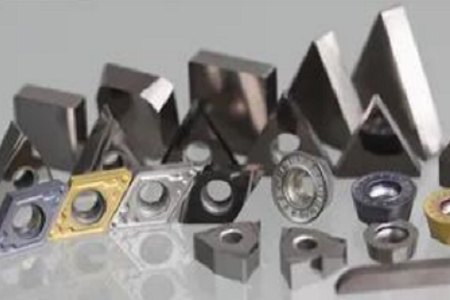 Dec 02, 2021Preparation and application of titanium carbide-based cermet
Dec 02, 2021Preparation and application of titanium carbide-based cermet -
.png) Dec 10, 2021Effect of ZrC-doping on Microstructural and Mechanical Properties of ZTA Ceramic Composites
Dec 10, 2021Effect of ZrC-doping on Microstructural and Mechanical Properties of ZTA Ceramic Composites

